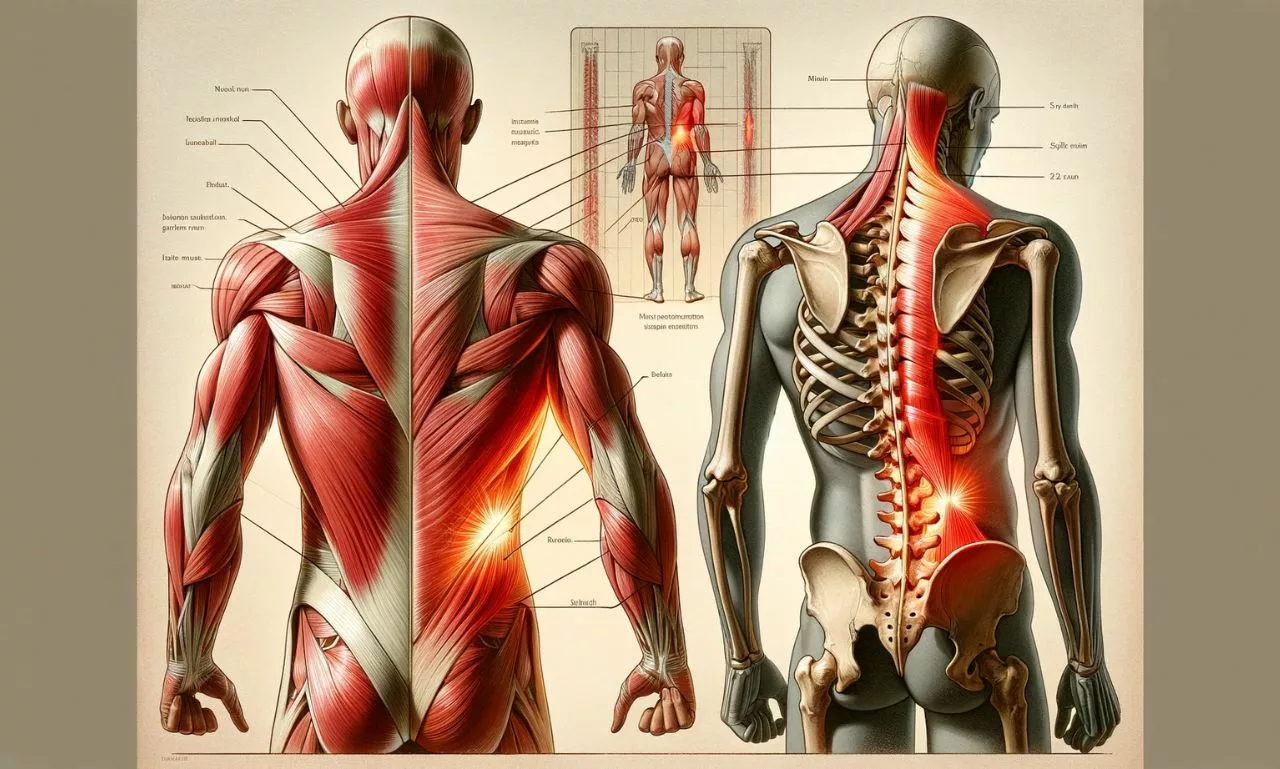Back pain is a common health concern, with a significant portion of the population experiencing it at some point. Understanding the connection between stiff and tight muscles and back pain is crucial for effective management and treatment. This article explores the causes of muscle stiffness, its contribution to back pain, and various treatment methods.
Table of Contents
Understanding Muscle Stiffness and Back Pain
Muscle stiffness refers to the sensation of tight, cramped, or painful muscles. Common causes include sleeping in awkward positions, excessive or intense exercise, or prolonged periods of inactivity, such as sitting at a desk for hours. When these stiff muscles are located in the back, they can lead to back pain.
Causes of Muscle Stiffness Leading to Back Pain
- Straining Muscles or Ligaments: Engaging in frequent heavy lifting or experiencing a sudden, uncomfortable movement can lead to the straining of muscles and spinal ligaments in the back. This is particularly true for individuals in poor physical condition, where constant strain can lead to painful muscle spasms.
- Lifestyle Factors: Factors such as aging, lack of exercise, excess body weight, and poor posture contribute to the problem. Sitting for extended periods is another common cause.
Symptoms of Muscle-Related Back Pain
Muscle strains in the back can cause a range of symptoms, including:
- Dull pain and stiffness.
- Pain that worsens with movement, particularly when bending or stretching.
- Difficulty standing up straight.
- Swelling or bruising in a specific area.
- Sharp or achy pain, usually confined to the lower back and buttocks area.
The Process of Muscle Stiffness Leading to Back Pain
When muscles in the back become stiff and tight, they lose their flexibility and elasticity. This condition can put undue pressure on the spine and surrounding structures, leading to discomfort and pain. Prolonged stiffness can also lead to poor posture, further exacerbating back pain.
Treatment for Stiff and Tight Muscles Causing Back Pain
- Physical Therapy: Gentle stretching and physical therapy can be effective, especially routines that stretch and lengthen muscle tissue, thus increasing blood flow.
- Medications: Non-steroidal anti-inflammatory drugs (NSAIDs) can be prescribed for more serious and chronic pain.
- Heat Therapy: Sustained heat treatment can improve symptoms of muscle tightness and stiffness by increasing flexibility and blood flow to muscle tissues.
Prevention and Management
Regular exercise, maintaining good posture, and taking breaks from prolonged sitting are essential preventive measures. It’s also important to warm up before exercising to prevent muscle strain.
Conclusion
Back pain caused by stiff and tight muscles is a common issue that can be managed effectively with the right approach. Understanding the causes, symptoms, and treatment options is key to addressing this problem. If you experience persistent back pain, it’s advisable to consult a healthcare professional for a personalized treatment plan.
Note: This article provides a comprehensive overview of how stiff and tight muscles can lead to back pain, offering insights into causes, symptoms, and treatment options. Regular preventive measures and seeking professional advice when needed are crucial steps in managing back pain effectively.
